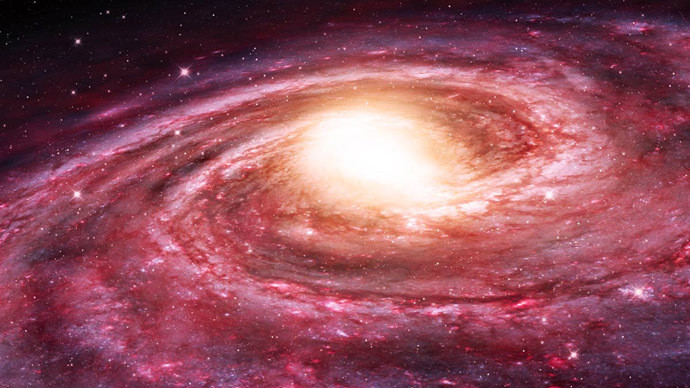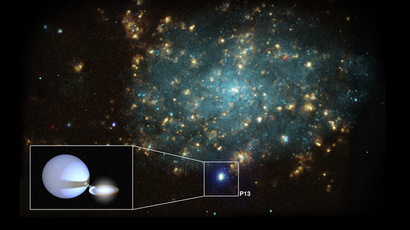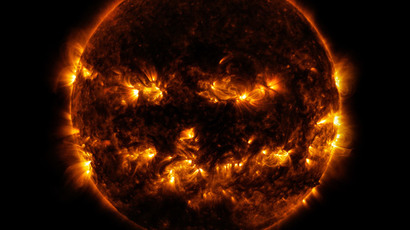Milky Way space pirate bullies nearby dwarf galaxies

The “survival of the fittest” rule works on a cosmic scale. Latest radio observations have led US astronomers to the conclusion that our home galaxy is responsible for a lack of star-forming gas in its neighbor galaxies.
Equipped with the most powerful radio telescopes, chiefly the National Science Foundation’s Green Bank Telescope (GBT) in West Virginia, scientists have revealed that our Milky Way is surrounded by dwarf galaxies that are completely devoid of hydrogen gas, which is vital to form stars. Their study was published in the Astrophysical Journal Letters on Monday.
The Milky Way is not a lone cosmic rover – it is the largest galaxy in a compact cluster, united by gravitational forces. Our galaxy is surrounded by smaller ones called dwarf spheroidals, which are relatively close and are believed to have been the remains of former galaxy formations. They orbit the Milky Way at speeds in excess of a million miles per hour, and it is easy for the gravitational forces to tear off large amounts of neutral hydrogen gas.
Our galaxy has a gaseous halo that extends for hundreds of thousands of light years, and, according to the astronomers, affects star formation in the nearby dwarfs. Actually, it halts this process in the galaxies that travel within the “danger zone.”

The researchers discovered the scale of the Milky Way’s influence on the galaxies orbiting it. Tiny spheroidal dwarfs are hard to find beyond the border point, but irregular dwarf galaxies – that are rich in star-forming gas – are frequent.
"These observations therefore reveal a great deal about size of the hot halo and about how companions orbit the Milky Way,"said astronomer Kristine Spekkens, assistant professor at the Royal Military College of Canada, in a press-release.
Past observations have detected an abundance of neutral hydrogen gas in distant dwarf galaxies that have irregular shape and are ‘newcomers’ to our neighborhood. However, the availability of this gas in minuscule galaxies closer to us has remained a mystery up until now, as no observed amount of it could be detected.
It was the combination of the power of the largest fully steerable radio telescope, the GBT, and other powerful ground-based telescopes that showed a border-line approximately 1,000 light-years from the outer edge of the Milky Way.
“What we found is that there is a clear break, a point near our home Galaxy where dwarf galaxies are completely devoid of any traces of neutral atomic hydrogen,” said Spekkens.
The GBT is the world’s first single-dish astronomical radio telescope operating from centimeter to millimeter wavelengths. Weighing 8,500 tons, it has an enormous 100-meter diameter collecting area, which means it can access 85 percent of the sky surrounding earth. In other words, it has a good view of both hemispheres at once.













